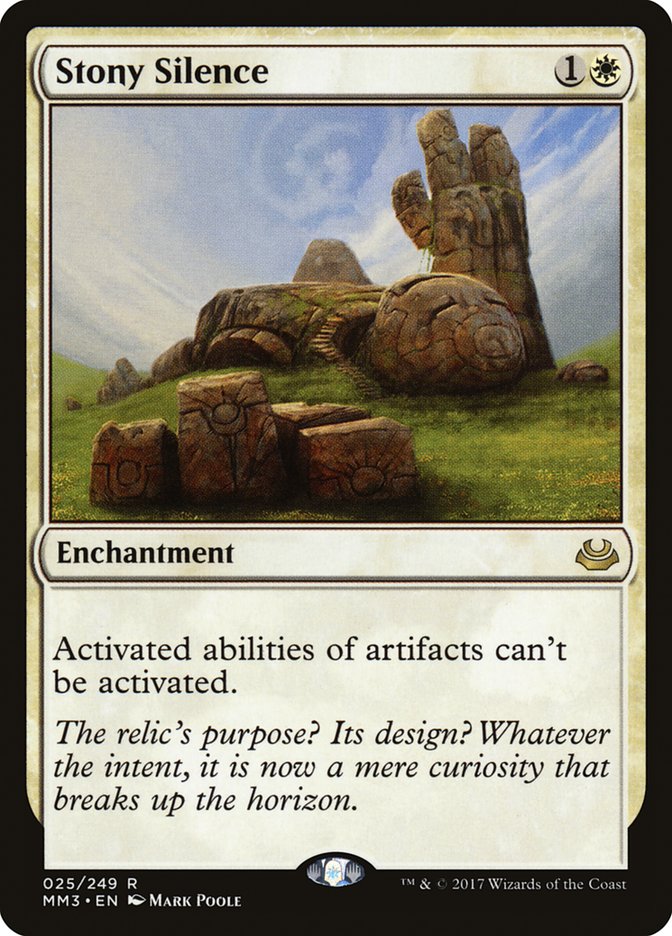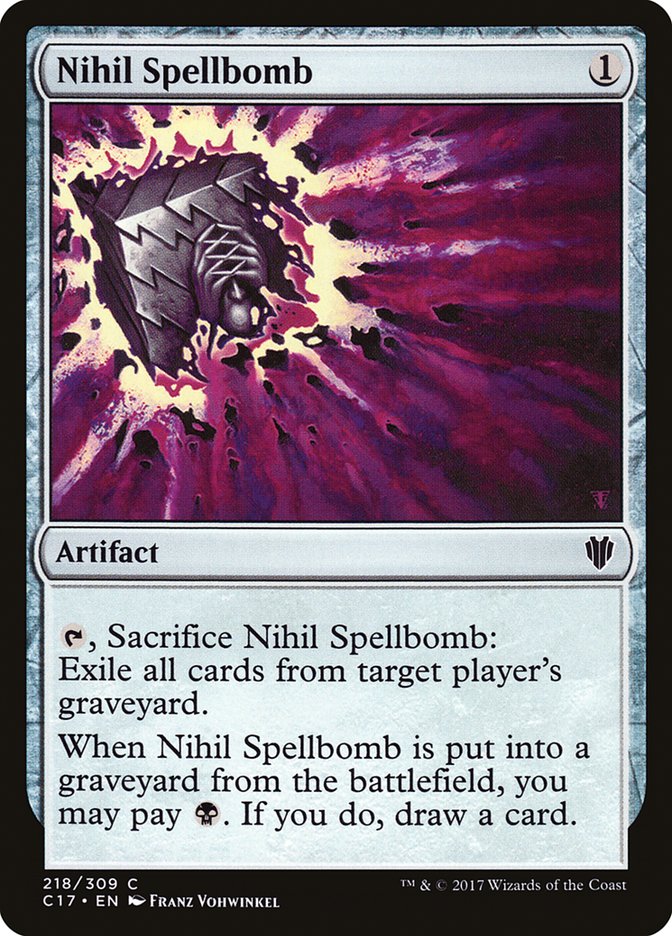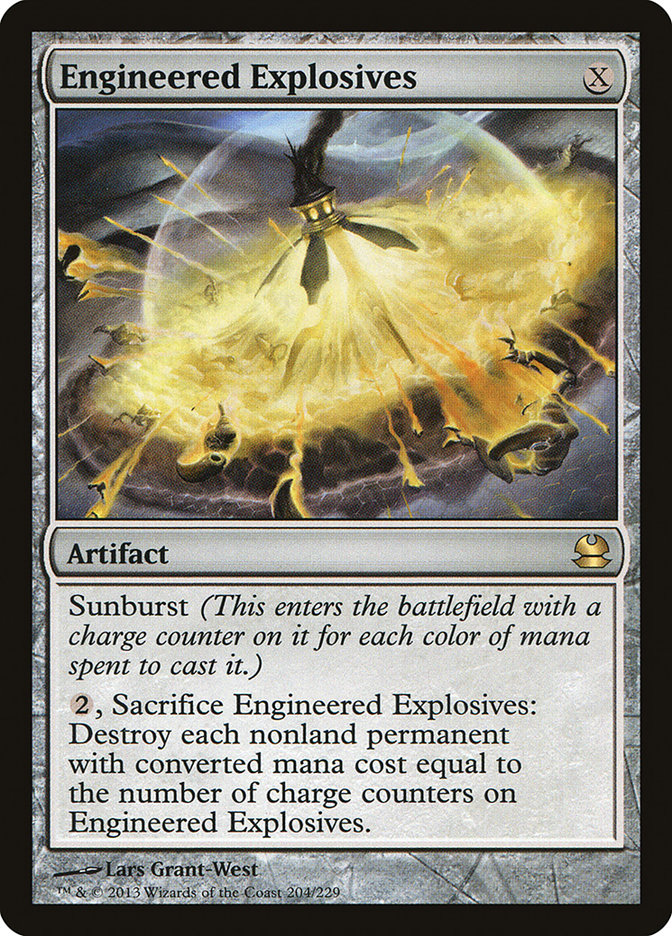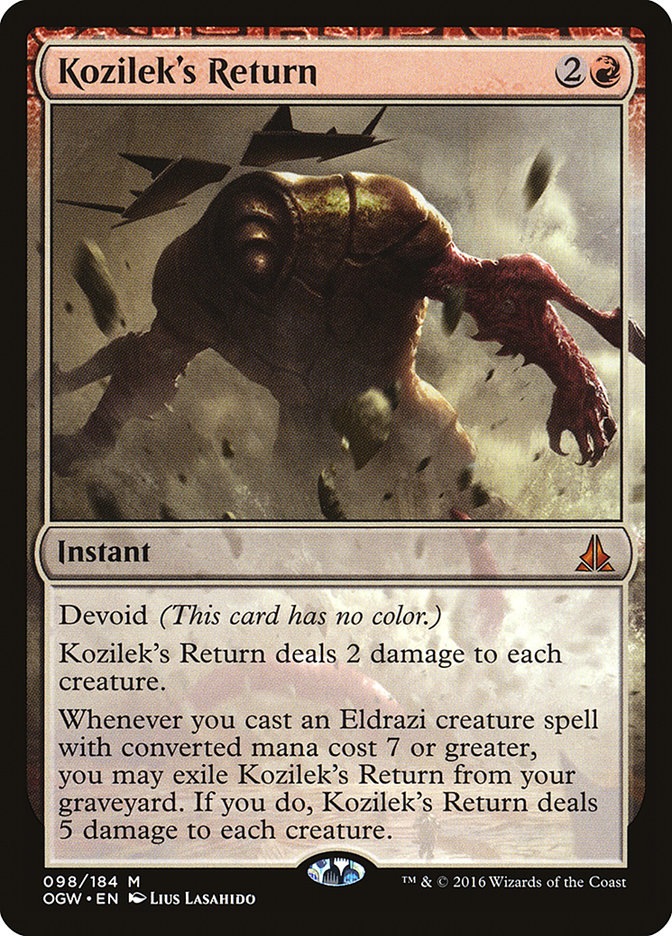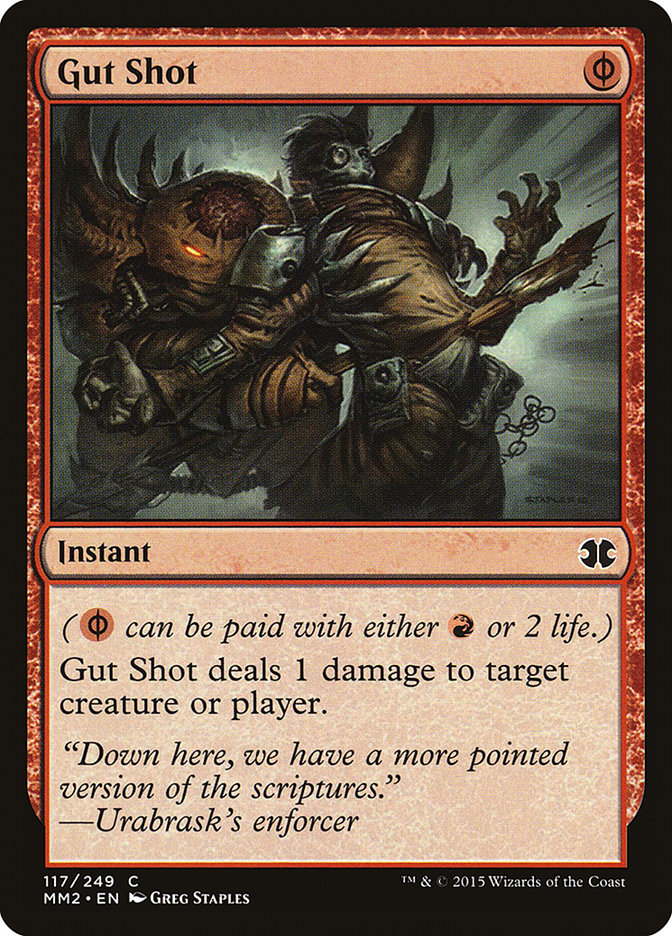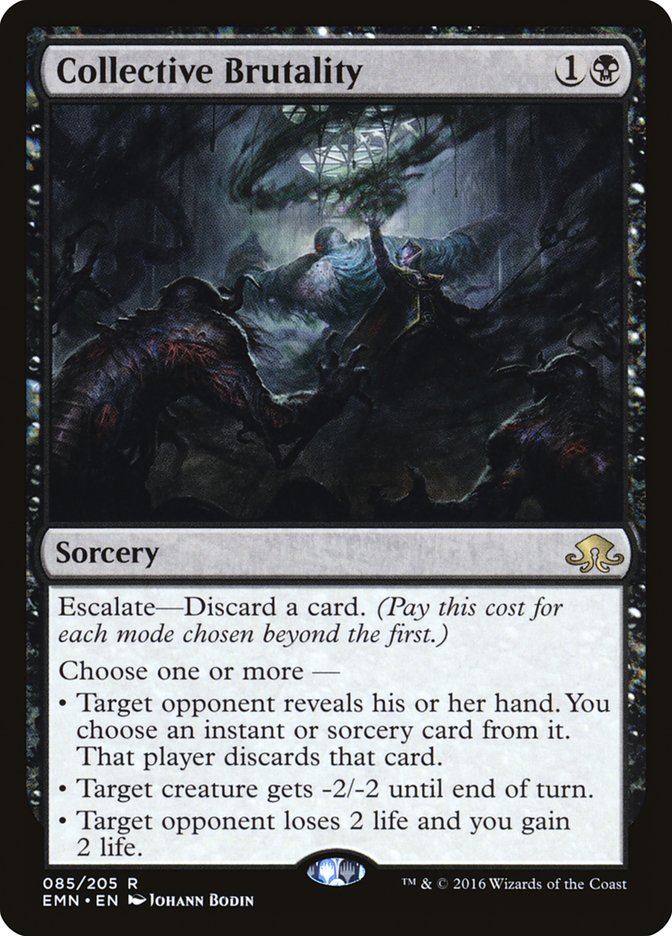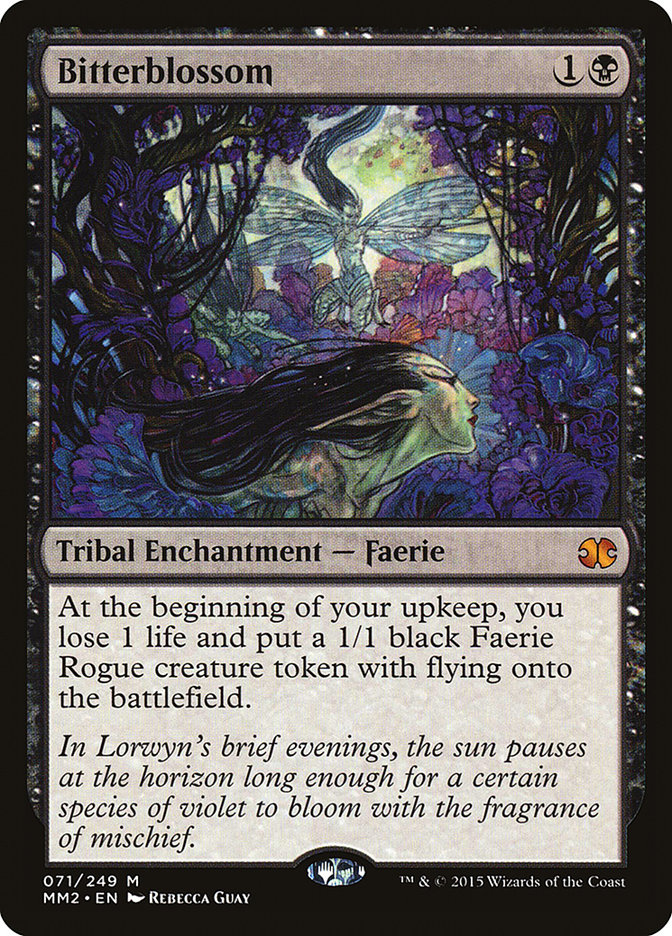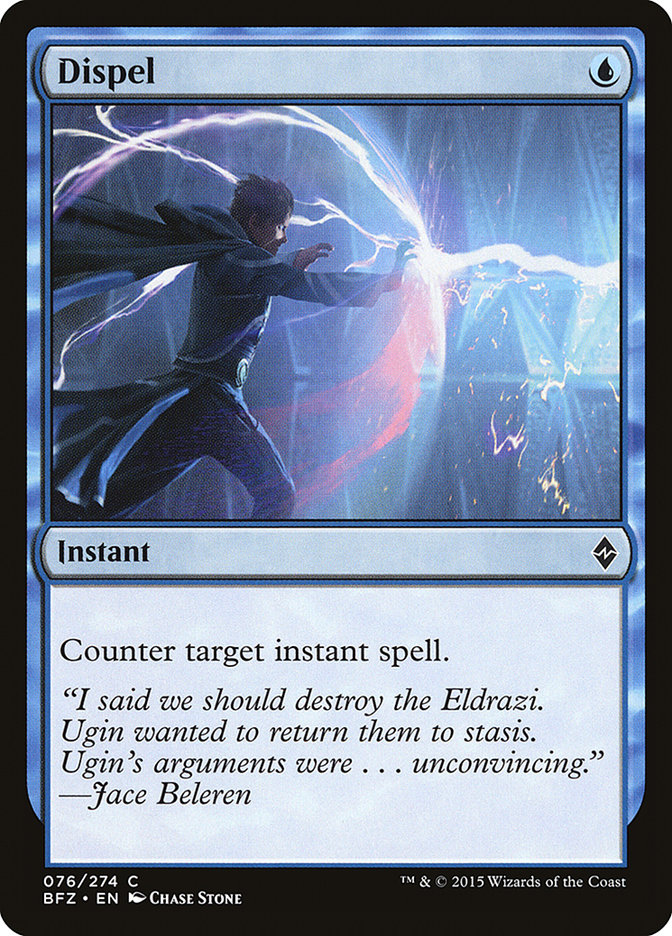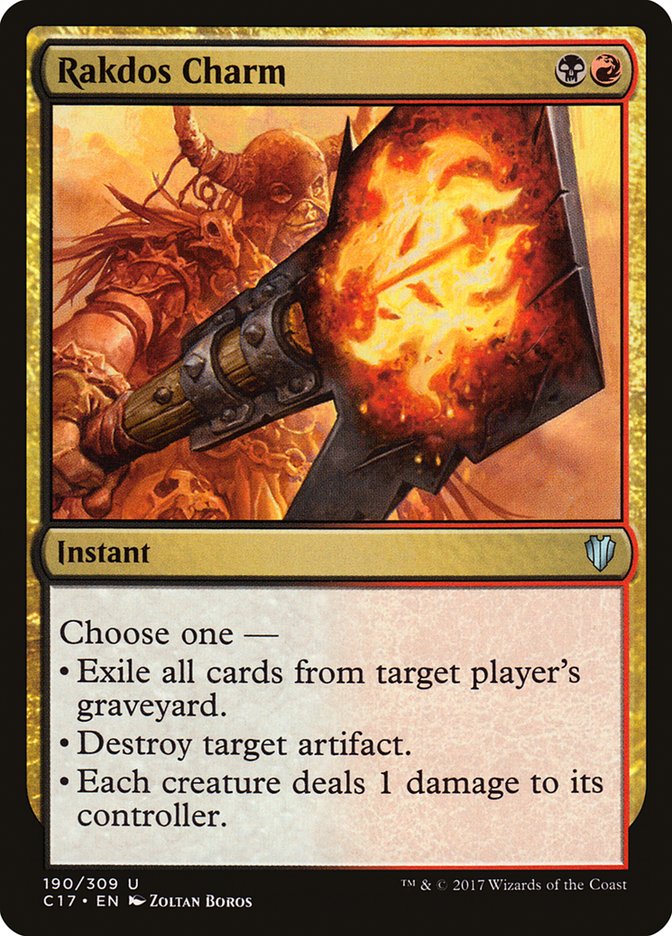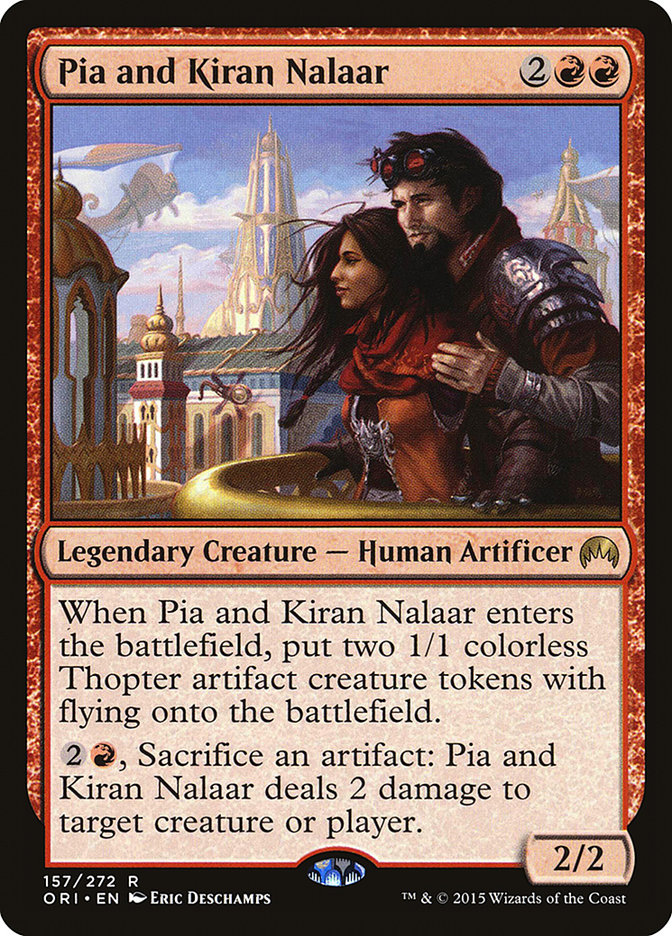Modern is driven by the interplay between polarizing linear archetypes and the answers to those linear strategies in fair decks’ sideboards. Since the format’s inception, the key question in Modern has always been, “What are the linear decks of the day, and can the midrange decks properly sideboard for enough of the linears?” We’re talking about decks with names that cause many a Modern player to groan:
Affinity
Infect
Twin
Eggs
Dredge
Storm
Burn
Tron
Lantern
Arrayed against these unfair, one-sided boogeymen lie fair decks (all named after their color combinations) like Jund, Jeskai, Abzan, Grixis, and U/W Control. The endless struggle between these two sides of the format is a hallmark of Modern. Often helpless in Game 1 against an angle of attack for which they were unprepared, the fair decks strike back in Games 2 and 3 with powerful targeted hate cards out of their sideboards and leave linear decks scrambling to find the best way to dodge or answer the hate. There are no two ways about it: the sideboard cards make Modern what it is, and the best ones have all but etched their names in stone at the entryway to every Modern tournament from here to Timbuktu.
This article is not about those cards. We already know about those cards. Stony Silence is a household name. Rest in Peace is more popular in Modern than the Beatles were in 1964. Blood Moon, Relic of Progenitus, Nihil Spellbomb, Ancient Grudge, Timely Reinforcements, Leyline of the Void and Leyline of Sanctity, and even Fulminator Mage are all well-known as proper answers to some of the poles of the format, with a time and a place for each of them in the right metagame.
Those are the easy ones to find a spot for in your sideboard. If you want to beat Affinity, you play the anti-artifact cards. If you want to beat Dredge, you play the graveyard hate. If you want to beat Burn, play lifegain. If you want to beat Tron, play nonbasic land hate. Anyone can do that.
The harder cards to justify playing are the less obvious answers. The efficient one-for-ones. The flexible cards that are 7/10 in four or five matchups, rather than being 10/10 in one or two. The sideboard jukes that allow a deck to take on a different role or pre-empt an opponent’s sideboard plan. That is what we need to discuss today.
This article is about ten of those underappreciated gems of Modern sideboarding, and where and when you should consider adding them to your deck.
Oh, Engineered Explosives. How do I love thee? Let me count the ways. It does work against half the Modern format and is especially useful against swarm-y aggro decks and Thalia-based Taxes decks. If you are worried about Humans, Affinity, G/W Hexproof, Lantern, Elves, Merfolk, Tokens, or Eldrazi Taxes, this artifact does what you need. It even works well against Jund, which is generally centered on powerful two-drops like Dark Confidant, Tarmogoyf, and Scavenging Ooze.
Grixis Death’s Shadow needs this card to shut down the swarm decks that are strategically favored against the archetype, but Jund, Abzan, and Jeskai can (and should) all make great use of this one. It can even stand in for narrower answers like Stony Silence or Ancient Grudge against Affinity and Lantern, doubling up against the tribal aggro decks, though you do lose the splash damage Stony Silence brings against Tron, Krark-Clan Ironworks, and Ad Nauseam. Generally, this is a tradeoff one should be happy to make, as the swarm aggro decks are more popular than the fringe artifact decks.
#9: Kozilek’s Return
This bad boy is quite similar to Engineered Explosives, providing a clean answer to a number of problems in Modern. Whether it’s a sideboarded Mirran Crusader, a pile of Lingering Souls tokens, an Etched Champion, a Young Pyromancer and company, a Nexus of the Blinkmoth or Inkmoth variety, fourteen 1/1 Goblin tokens, or simply a small pile of mana accelerants, Kozilek’s Return will clean them all up at instant speed, and there’s no saving them with Burrenton Forge-Tender.
This card is similar to Pyroclasm, with the major points for Kozilek’s Return being its instant speed and ability to answer Etched Champion. Both this and Pyroclasm deserve frequent consideration whenever a deck needs to be flush with cheap answers to flooded game states. Incidentally, in certain Tron decks, the backside of the card actually has some utility, although not nearly as much as it did in Standard off the back of Elder Deep-Fiend.
Some people want to play Stubborn Denial. Some people want to play Ceremonious Rejection. Some people want to play Remand. Some people want to play Mana Leak. Some people want to play Negate.
Oftentimes, these people are doing themselves a disservice.
Disdainful Stroke is the best counterspell for Grixis and Jeskai decks that need to combat both Scapeshift and Tron decks. Compared to Ceremonious Rejection, Stroke covers the TitanShift matchup and comes in against Storm and the various Cryptic Command decks, but it doesn’t do anything against Affinity. Therein lies the rub, and the decision point for a savvy Modern metagamer. If it’s Tron and Affinity hate you need, then Ceremonious Rejection is your friend. If it’s combo and big mana deck hate, you need to employ Disdainful Stroke.
This is the widest application for when a player would actually want to bring in countermagic. Consider that in the Affinity matchup, it often pays to answer the threats once they’re already on the battlefield, rather than hoping to counter them with Rejection. Imagine being on the draw and facing down a Turn 1 Cranial Plating. You’d much rather have removal against Affinity (though to be sure, no one will turn down having a Ceremonious Rejection or two against the robots), and you’d much rather have countermagic against the big mana or combo decks. As such, you should focus your countermagic slots where they will be most impactful against a wide range of matchups. Disdainful Stroke is your answer.
#7: Gut Shot
Gut Shot is criminally underplayed right now as the most efficient answer around to fast starts from Humans, Affinity, Infect, and most Collected Company decks. It doesn’t get much cheaper than zero mana, and if you’re playing any deck without an abundance of great removal, then it makes perfect sense to sideboard in a pair of Gut Shots in order to Time Walk your opponent’s Noble Hierarch, Champion of the Parish, Vault Skirge, Signal Pest, Steel Overseer, or other annoying X/1 creature. I expect to see more Gut Shots creep into sideboards every time those swarm decks gain traction.
Collective Brutality has been heralded before as the Modern answer to Burn, one of the best maindeckable sources of lifegain for midrange decks like Abzan and Jund. The full-force Brutality is often too much to overcome for most Burn starts, and its applications in a wider range of matchups are not to be ignored. Cards that are 8/10 in a single matchup while being 5/10 in a wide range of matchups are the best Modern sideboard cards you can ask for, and this one is no exception.
Besides crushing Burn, Collective Brutality also helps against Collected Company decks by taking out a mana creature and the Collected Company in their hand. It helps against combo decks by being a bad Duress and can even come in against things like Merfolk, Humans, and Elves as a bad Disfigure. This is a Swiss Army Knife for a Modern sideboard, and it deserves consideration whenever Burn is giving you trouble.
Cross your Izzet Staticaster with a Raise Dead, throw in an ultimate that wins most fair matchups outright, and you might be ready to talk about the second-best Liliana ever printed. Liliana, the Last Hope gets her spot on the list by enabling the vaunted single-card gameplan, where you sabotage an opponent’s targeted sideboard hate or plans to shift gears in the matchup by bringing in in a card that you can sculpt an entire gameplan around resolving and winning with.
A prime example of this phenomenon is when folks bring in Leyline of the Void or Rest in Peace against Grixis Death’s Shadow. Liliana of the Veil and Liliana, the Last Hope are both stellar ways to sidestep the hate card and threaten a winning line that the opponent must answer while being down a card. This is in addition to the fact that this Liliana is a perfect answer to Lingering Souls, which is often a stellar card against Death’s Shadow and Grixis Control, and it can come in against the same annoying swarm decks that Izzet Staticaster comes in against. It even provides additional recursive elements for your Snapcaster Mages in long, grindy Death’s Shadow mirrors! What’s not to love?
#4: Bitterblossom
For the mage who needs to keep grinding away at an opponent with enough removal to take down an army, Bitterblossom is the answer you’re looking for. As an Affinity sideboard card against decks like Jeskai or Grixis, there’s no better way to keep applying pressure in an unexpected way than to bring a few Faeries to the party. Of course, you expect sweepers. Of course, you expect artifact removal. You might even expect Stony Silence. Bitterblossom is simply the sidestep gameplan-in-a-box type of card for Affinity to make all of those answers look foolish.
Bitterblossom is similar to Ghirapur Aether Grid in a lot of ways in Affinity, but the wonderful thing about Bitterblossom is that it’s not limited to Affinity. Jund, Abzan, Grixis, Four-Color Shadow, and a number of underdog decks can also make great use of this enchantment as a way to keep the pressure on through multiple copies of Fatal Push, Path to Exile, Supreme Verdict, and the like.
#3: Dispel
Dispel is a common enough sideboard card for Jeskai midrange and control decks. It’s strong against every Snapcaster Mage deck in the book, it’s strong with Snapcaster Mage, and it has cross-applications against decks like Burn, Storm, and Ad Nauseam.
The best use of Dispel, though, is in protecting your threats, and as such, it deserves more consideration in Grixis Death’s Shadow as additional copies of Stubborn Denial. With Dispels and Stubborn Denials, Grixis Death’s Shadow stands a much better chance against challenging matchups like Burn, U/W Control, Jeskai Control, and U/B/X Control. It also has an easier time protecting its eponymous creature against the onslaught of removal an opponent is likely to bring to the table. Watch for Dispel to increase in market share as Cryptic Command decks rise in the metagame.
#2: Rakdos Charm
Hey! You got your Nihil Spellbomb in my Ancient Grudge!
To be clear, Rakdos Charm is not nearly as good as either one of those hate cards in their respective matchups, but it is good no matter which of those matchups you end up facing. That is the hallmark of a strong Modern sideboard card, one that is still plenty strong enough to wreck the primary matchup you bring it in for, yet with a secondary mode that gives it additional utility. Abrade also falls into this category as a stellar card against decks like Humans, Lantern, Affinity, Elves, Merfolk, Taxes decks, and Noble Hierarch decks.
Rakdos Charm, however, is the perfect hidden answer (hidden, of course, because unlike Nihil Spellbomb, they don’t see it coming) to Dredge and Living End, two matchups that generally require narrow, specific answers to really hope to beat. Respect the Charm as a way to get additional sideboard slots for those low-percentage archetypes while not compromising the rest of your sideboard.
This legendary couple is the Red Lingering Souls and should be respected as such. Whether they supply blockers for Blinkmoth Nexus and Etched Champion, pressure to attack an opposing Liliana of the Veil, or simply Shocks on a stick to trade with various Humans, Elves, Merfolk, or Flickerwisps, Pia and Kiran put in the work you need in your Jeskai, Jund, and Grixis decks.
With a package of a couple of Pia and Kiran Nalaars; a pair of Liliana, the Last Hopes; and a Kolaghan’s Command or two, any Grixis Death’s Shadow deck can quickly change gears and grind with the best of them. On the other hand, should a Shadow deck be causing your Jeskai deck trouble, Pia and Kiran are the best way to apply just the right amount of pressure to topple their often-precarious life total while answering their erstwhile best card against you, Liliana of the Veil. In the complex interplay between midrange decks, Pia and Kiran Nalaar offer a valuable service if your manabase can support their casting cost.
***
Modern sideboards are among the toughest parts of Magic to get right these days. You have options as surgical as Surgical Extraction, as wide-ranging as Negate, and everything in between. Single changes from a Kolaghan’s Command to a Rakdos Charm or from a Stony Silence to a Wear // Tear can make or break a tournament, and it pays to map out exactly how you cover all of the major archetypes in the format with your sideboard.
The beauty of contemporary Modern, though, is that there often are the right answers to give you the flexibility to answer just about everything, though never quite as well as you might like. Great deck designers spend hours hemming and hawing over their last few choices, and the discovery of a long-lost piece of “tech” can make ordinarily taciturn players giddy.
Sadly, you can’t buy a sixteenth sideboard slot, no matter how hard you try, but with options like the ten discussed above, there is a distinct possibility that you might not need one.


